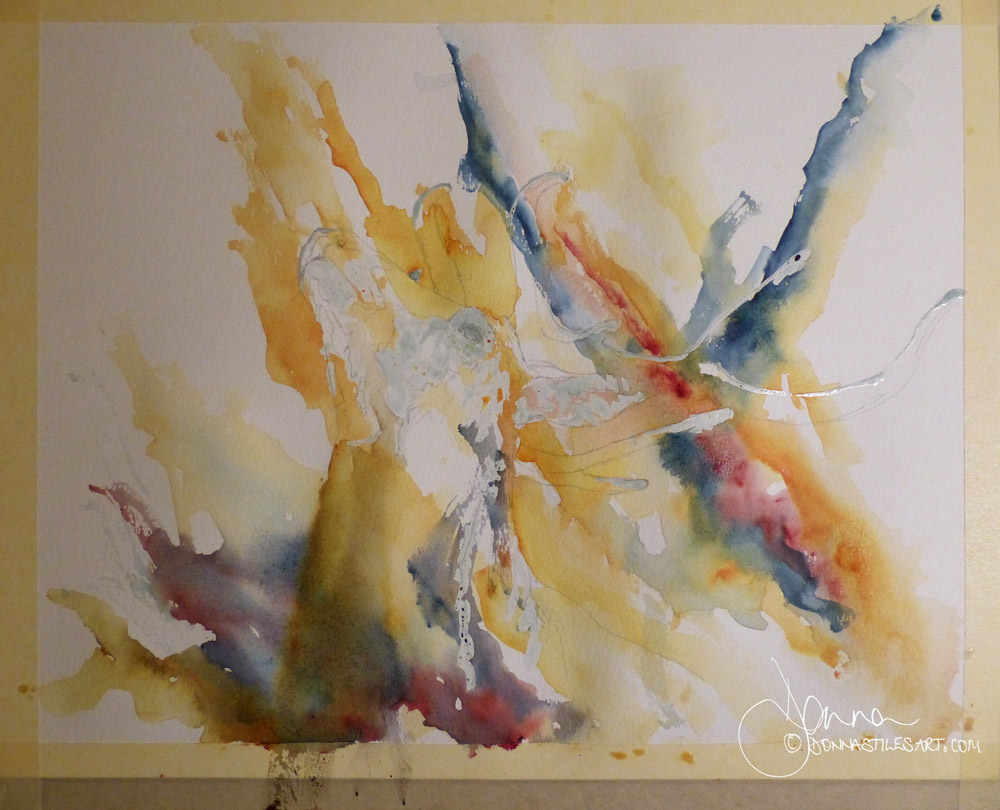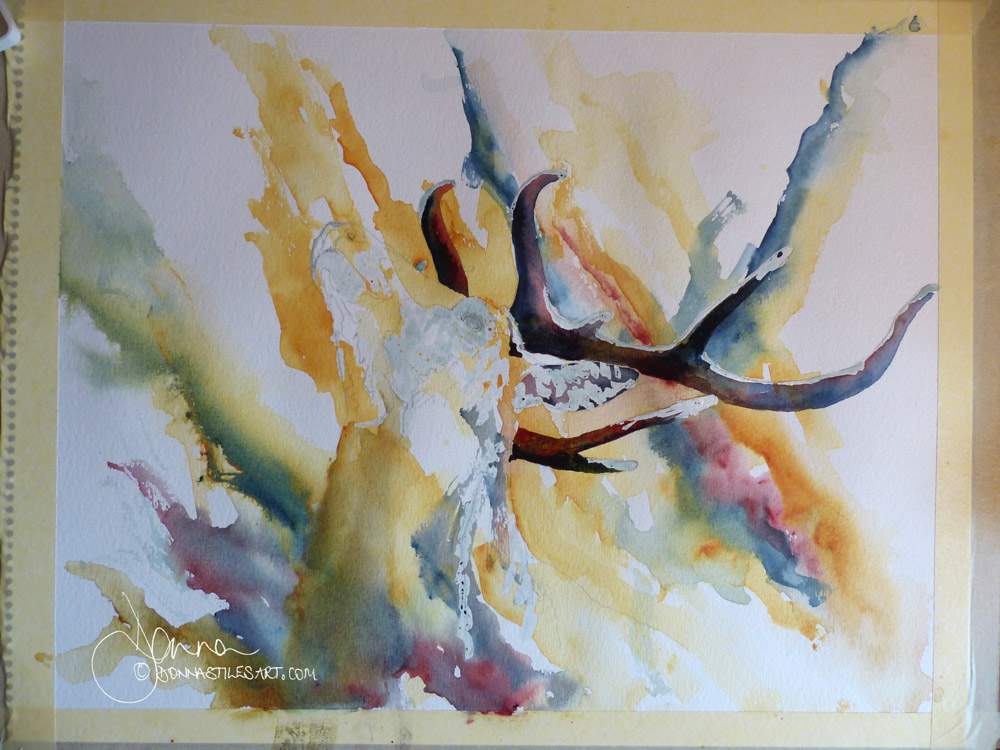- Home ›
- Watercolour wildlife art ›
- Watercolour stag
Watercolour stag, not one but two!
step by step paintings
I will always remember my first watercolour stag painting: he was one of my very first watercolours and I never knew that I could be so expressive with a paint brush and colour. I had a lot of fun and learnt a lot painting him.
So I immediately painted him again! Follow the step by steps of each one below.
My first watercolour stag
The first watercolour washes
This moment, the first time I put watercolour pigment to paper is such a joy: it is the most free and expressive part of any painting and the most exciting. Because. If you let it. It is here more than anywhere, that you can see play out before you the magic that is watercolour. When it does its thing. Without you!
Don't be tempted to touch or tame it! If you have to, that comes later.

The three colours I used throughout the painting were Quinacridone Gold and Perylene Maroon by Daniel Smith and Indigo by Winsor & Newton.
Painting in the antlers
When I came to paint in the antlers I knew that I had used way too much masking fluid in protecting the white highlights that I had wanted to keep. The masked lines were too thick. I would need to go back into the areas of the paper that were covered to match them to what I had already painted.
The advantage of using masking fluid and why I used it in this painting is because it allowed me to paint the stag and his surroundings as one. To be able to sweep colour across the whole sheet of paper without any worries about the lighter areas I would need later. But I had been heavy handed with my application: I have since bought the perfect tool for applying even fine lines of fluid without ruining my brushes.

And I loved the way in which here, although he is now fully recognisable and looking at me, he is still merged with his surrounds. Camouflaged.

I had a decision to make: to strengthen the tonal values and colours in his back. Or leave him alone. I really liked him like this, blotchy masking fluid removed areas and all.
I decided on the first.

But once I had done that, his chest also needed to be brought up to the same. Which meant I then also needed to do the same to his head.
For my first attempt, he cuts a striking figure and I like him.
But.

I had overworked him. And longed for the fluidity and the way he was one with his environment that I had in the stage before. And in the stage before that. Which, even though it was so very early in my watercolour journey, felt so much more my style.
My second watercolour stag painting
So I painted him again. (Using the same colours: Quinacridone Gold and Perylene Maroon by Daniel Smith and Indigo by Winsor & Newton.)
The first washes
I started with the bold diagonals again but, in trying to replicate what I had done in the first, it was no longer play and I tightened up. I can see it in the strokes.
Watercolour lesson learnt: you cannot ever replicate a painting with watercolour because the outcome of the dance between pigment and water on the surface of the paper will never be the same, so don't try! The only exception might be in photorealism painting and a master of the art.
But I was loving the flow of pigments, one into another, and the granulation patterns that were forming. None of which was by design: I so love the magic of watercolour :)

Second wash
Adding another layer of one of my favorite colours: Quinacridone Gold. This one is by Daniel Smith. As is the Perylene Maroon.

Now he's looking at me
The masking fluid has been rubbed off. His antlers, ear and eye painted in. And he's looking at me!

At this point I ummed and ahed again about whether to leave him be. Or to paint in more of his body. In the end I decided that his back and neck needed differentiating and so I added a layer of Perylene maroon to his back. And gave his head some cohesiveness by painting in his neck and around his nose with the same colours as his ear.
Then the detail of his nose and mouth.
And stopped.

I like him just as much as the first. But I still think I could have stopped a stage before! So another painting it will have to be!
But that's the only way we can learn for real. And find what makes us happy. What we want to say and the way we want to say it: our unique style.
I so wish you fun on finding yours.